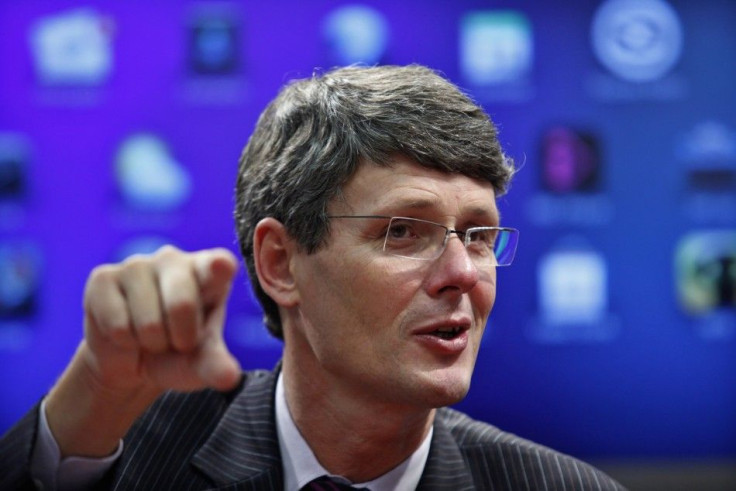RIM Recovery: Did Heins Just Buy Six Months For BlackBerry?

The late King Hussein of Jordan titled his autobiography Uneasy Lies the Head. That could be the title Thorsten Heins, CEO of Research in Motion (Nasdaq: RIMM), the ailing BlackBerry developer could use for his book, too.
On Tuesday, Heins, 54, bought himself a little time: the new CEO was elected by shareholders to the board of the Waterloo, Ontario-based company was products wereonce so ubiquitous and compelling with the corporate crowd they were dubbed crackberries.
To be sure, 30 percent of RIM shareholders withheld their votes to re-elect former lead director John Richardson, 79; 19 percent voted against former co-CEO Mike Lazaridis, 51.
Heins had to admit to shareholders whose stock has plunged 75 percent in the past year that he wasn't satisified with performance. And new chairman Barbara Stymiest, 55, promised to add as many as two more new directors to augment three newcomers, including Timothy Datels, 53, a partner with TPG Group, the huge private equity firm formerly known as Texas Pacific.
Could private equity be the way to go? RIM is already firing a third of its 14,600 people and taking appropriate charges to pay for it, which would be what a private equity buyer like TPG or Bain Capital would do.
Last year, when RIM's former co-CEOs Lazaridis and Jim Balsillie, 51, were running the company, there was talk a private equity group might bid for RIM, then valued around $15 billion.
Now RIM is valued at only $3.74 billion, based on Tuesday's share price of $7.22, down 45 cents, or 6 percent, in post-annual meeting trading.
It was also suggested a smartphone rival like Finland's Nokia (NYSE: NOK) might bid for RIM or perhaps South Korea's Samsung Electronics (Seoul: 005930). But not much has happened.
To be sure, RIM is paying both JPMorgan Chase (NYSE: JPM) and Royal Bank of Canada (NYSE: RY) for advice, although neither Stymiest nor Heins gave any evidence of their thinking.
On a product timeline, though, Heins at least suggested the long-delayed BlackBerry 10 might ship as early as January, rather than March or April as the company suggested when it reported its first-quarter loss of $518 million, or 99 cents a share.
The company also said they'll be four BlackBerry 10s using the new QNX OS, the first time they've announced numbers.
Clearly, Heins is banking on RIM's 78 million subscribers to remain on the system for the next six months - during which there will likely be a new iPhone from Apple (Nasdaq: AAPL), the world's most valuable company; the first Microsoft (Nasdaq: MSFT) Windows 8 phones from Nokia and others; new Android units from Google (Nasdaq: GOOG), the No. 1 search engine, Amazon.com Inc. (Nasdaq: AMZN), the No. 1 e-retailer, Samsung and Taiwanese makers.
Last Friday, RIM filed a document with the U.S. Securities and Exchange Commission in which it valued the book value of its 3,357 patents at $3.37 billion as of June 2, the end of the fiscal first quarter.
That's nearly as much as all of RIM is worth now, which could mean management is on tap to auction all or part of it, or at least license some it, a course advocated by Toronto investor Victor Alboini, of Jaguar Financial, which took a stake below 5 percent in RIM lasy year.
The intellectual property is valued as much as $4 billion, Craig Marlett, CEO of MDB Capital, an IP investment bank in Santa Monica, Calif., said last week.
So a sale to private equity, IP sales and licenses are apparently on the table. Alboini proposes splitting RIM in half, selling the BlackBerry enterprise management system to Microsoft or International Business Machines Corp. (NYSE: IBM) and the handset and tablet lines to an Asian bidder.
After the meeting at Wilfrid Laurier University, Heins told the press, We're not limiting ourselves. There is a lot of action going on in looking at different options the company can do.
RIM is by no means broke: it reported $2.5 billion in cash and investments on June 2, mostly in commercial paper.
So one option not on the table is bankruptcy court, a venue for former technology superstars like Silicon Graphics (Nasdaq: SGI), Wang Laboratories and Polaroid. Eastman Kodak (Pink: EKDKQ) is there now because it ran out of cash in January.
By the time Heins formally introduces the BlackBerry 10, probably the only sure thing is that it will be a cold winter day in Canada.
© Copyright IBTimes 2024. All rights reserved.






















